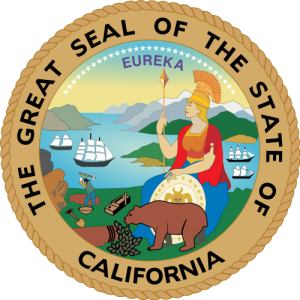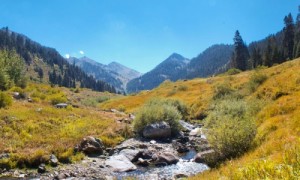 California Population 2013
California Population 2013
Based on estimates and the studies by the United States Census Bureau, the population of California in 2013 is estimated to be 38,041,430, which is the largest population in the United States. This growth displayed a 2.1% increase from the last census taken in 2010. Based on the population and based on the area of the state, the population density of the state is about 242 people per square mile, ranked the 11th largest population density in the United States.
California Population Projections
Based on the historical and current trends of the state, the population is expected to reach about 38.801 million people by the year 2015. This population would be a 2% increase from the current population of California. Then, by the year 2020, the population is expected to continue that trend. It is expected to reach 40.644 million people. This would be a 6.8% increase from the current population. Continuing a fairly steep increase, the population is expected to reach 42.452 million people by the year 2025, recording a population increase of 11.6% from the current population. Then, by the year 2030, the total population is estimated to be about 44.279 million people, which is a 16.4% increase from the current population. The population is expected to top 45 million people by the year 2035 to an estimated population of 46.083 million people, which is a 21.1% increase from the current population. From there, the population is expected to be approximately 47.69 million people by the year 2040. This would be an increase of about 25.4%. Then, in 2045, the population is estimated to reach 49.11 million people, a 29.1% increase from the current population in the state of California. Lastly, by the halfway point in the century, the population of California is projected to exceed 50 million as it reaches 50.365 million people, a 32.4% increase from the current population.
California Land Mass
Measuring from east to west, the state of California is about 560 miles across; measuring from north to south, the state is about 1,040 miles long. The state also has an approximate area of 163,707 square miles, making it the 3rd largest state in the country. California occupies about 7,734 square miles of water. Compared to this water area, California takes up 155,973 square miles of land. Mount Whitney has the highest elevation point in the entire state of California. It reaches an approximate 14,494 feet above sea level. It is also the highest point in the contiguous states. The lowest point in the state is in Death Valley, which reaches 282 feet below sea level. This point is the lowest point in the entire country. The geographic center of California 38 miles east of Madera. Three states, one body of water, and one international country border the state of California: Oregon, Nevada, and Arizona, the Pacific Ocean, and Mexico.
California is made up of eight distinct geographic land areas: the Klamath Mountains, the Coastal Ranges, the Sierra Nevada, the Central Valley, the Cascade Mountains, the Basin and Range Region, the Los Angeles Ranges, and the San Diego Ranges. The Klamath Mountains are located in the northwest corner of the state. These mountains tend to be covered with forests and are separated by deep canyons. The Coastal Ranges lie along the western border of the state, ranging from the Klamath Mountains in the north to the Los Angeles Mountains in the south. Most of these mountains are fairly small, but are separated by large valleys. The Sierra Nevada is in the eastern part of the state, ranging a little more than 400 miles from north to south. These mountains include the highest point in the state. Also, Yosemite Valley is one of the most popular valleys in this area. The Central Valley, as its name notes, is in the central part of the state. It also lies between the Sierra Nevada and the Coastal Range. This area is the most important farmland in the whole state. It makes up 60% of the productive farmland in California. The Cascade Mountains are in the northern part of the state to the east of the Klamath Mountains. These mountains were actually formed by volcanoes, including one that is still active. The Basin and Range Region lies along the southeastern part of the state. This area includes lava plateaus in the north and deserts and wasteland in the south. The Los Angeles Range lies in the Los Angeles area along the southwestern part of the state. These mountains are unique due to the fact that they extend east to west instead of north to south. Lastly, the San Diego Range is in the very bottom southwestern corner of the state.
California Demographics
Approximately 50.3% of the state’s 38.041 million people are female, while the other 49.7% of the population is male. Also, those that identify as white (including Hispanic or Latino) make up the largest percentage of the demographics in the state of California. Approximately 74% of the state identify as this race. But, out of that 74%, about 35% do identify as Hispanic or Latino and the other 39% as Caucasian. Those that identify as Black or African American make up 7% of the entire population of the state of California. However, the Asian population is larger than the African American population, making up 14% of the population of California. The rest of the population is made up of those that identify as American Indian, Alaskan Native, Native Hawaiian, other Pacific Islanders, or those that identify as two or more races. These other races make up about 5% of the California population.
California Religion
The population of California has a slightly less religious population than the average state. About 45% of the state population identifies as religious, compared to the national average of 49%. Out of the 45%, about 28% identify as members of the Catholic Church, making it the largest denomination in the state of California. All the other Christian denominations make up about 14.5% of the population. Those that identify with the Jewish, Eastern, or Islamic faiths make up about 2.5% of the state. However, as a result of the large Asian population, those that identify as members of Eastern faiths make up 1.2% out of the 2.5%, which is over double the average Eastern religion populations.
Visit California
 California Activities
California Activities
Conventional wisdom holds that California is for the young. The state is chock-full of attractions for kids of all ages, especially the under-18 set. From Disneyland, the granddaddy of all theme parks, to world-class aquariums, zoos, historical museums, and outdoor activities, California will keep your family engaged and hopping. Perhaps no other state has a greater variety of outdoor activities for kids than California. From the endless coastline to the state’s extensive state park system-and of course, more national parks, monuments, and wilderness areas than any other state-California will keep your active child on the go. With over 800 miles of hiking trails, Yosemite is a delight for trekkers of all abilities. You can take an easy half-mile stroll on the valley floor; venture out all day on a quest for viewpoints, waterfalls and lakes or go wilderness camping in the remote outer reaches of the backcountry.
Other Resources
Learn more about California here.


